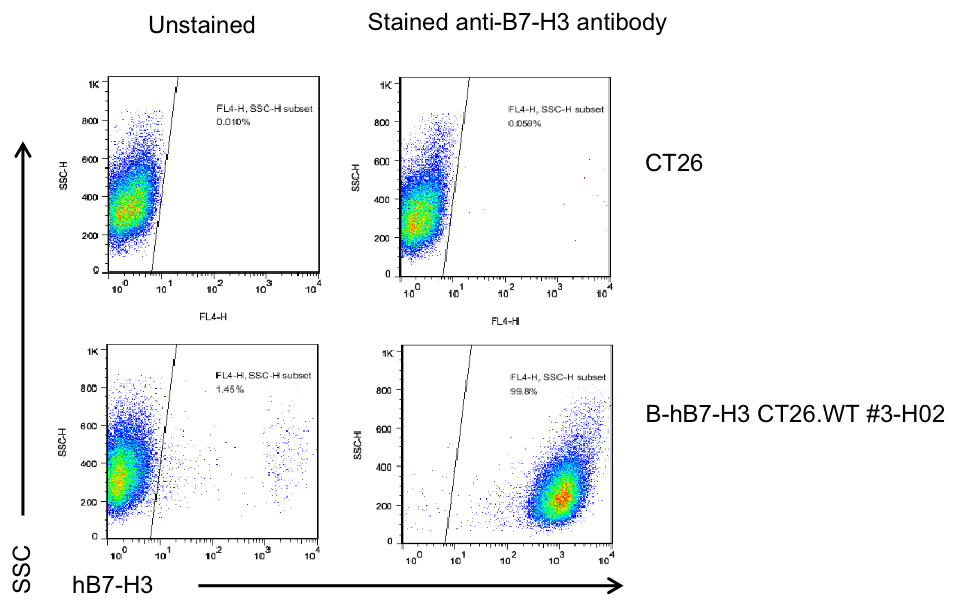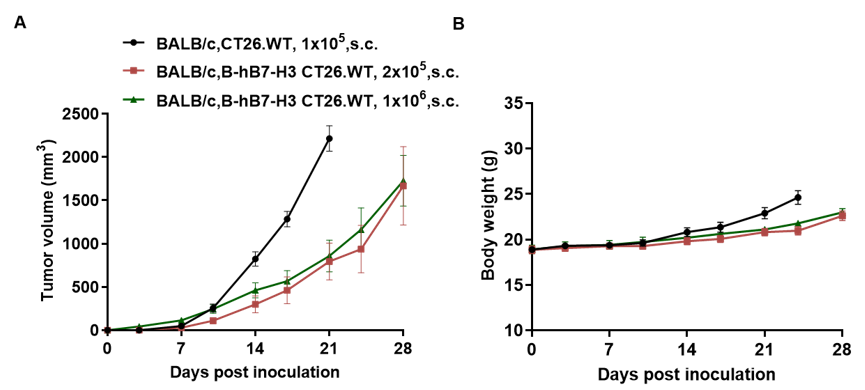|
Common name |
B-hB7-H3 CT26.WT | Catalog number | 321829 |
| Aliases | CD276; B7H3; B7RP-2; 4Ig-B7-H3 | Disease | Colon carcinoma |
|
Organism |
Mouse |
Strain | BALB/c |
| Tissue types | Colon | Tissue | Colon |
Description
The mouse B7-h3 gene was replaced by human B7-H3 coding sequence in B-hB7-H3 CT26.WT cells. Human B7-H3 is highly expressed on the surface of B-hB7-H3 CT26.WT cells.

B7-H3 expression analysis in B-hB7-H3 CT26.WT cells by flow cytometry. Single cell suspensions from B-hB7-H3 CT26.WT cultures were stained with species-specific anti-B7-H3 antibody. Human B7-H3 was detected on the surface of B-hB7-H3 CT26.WT cells but not wild-type CT26.WT cells. The 3-H02 clone of B-hB7-H3 CT26.WT cells was used for in vivo experiments.

Subcutaneous homograft tumor growth of B-hB7-H3 CT26.WT cells. B-hB7-H3 CT26.WT cells and wild-type CT26.WT cells were subcutaneously implanted into BALB/c mice (female, 7-week-old, n=5). Tumor volume and body weight were measured twice a week. (A) Average tumor volume ± SEM. (B) Body weight (Mean± SEM). Volume was expressed in mm3 using the formula: V=0.5 X long diameter X short diameter2. As shown in panel A, B-hB7-H3 CT26.WT cells were able to establish tumors in vivo and can be used for efficacy studies.












